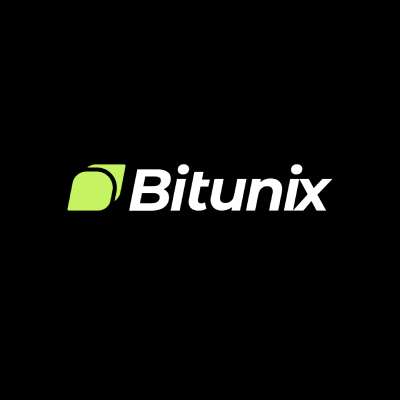原文作者:James Wo,数字金融集团创始人兼首席执行官

On May 9, 2024, Hong Kong welcomed the first Bitcoin Asia conference. The previous Bitcoin conference was basically held in Europe and the United States. This move also pushed the Web3 industry in Asia to a new height. The current prosperity of the Bitcoin ecosystem is inseparable from the Asian market, which includes Asian developers and project parties. Perhaps for this reason, the Bitcoin conference chose Hong Kong as its first stop this year. At the conference, people talked most about the current status and future development of the macro Bitcoin ecosystem and Layer 2 technology. Of course, these are all centered around the financial attributes and transactions of Bitcoin. The conference site brought together exhibitors such as project parties, mining machine manufacturers, wallets, ETF exhibitors, exchanges, etc. According to my observation, there should be more than 1,500 participants in the two-day conference. Guests are also the main contributors to each link in the Bitcoin ecosystem.
Here are some of the key insights and personal reflections I gained from the conference:
Conference Highlights
The core of this conference is the display and discussion around the Bitcoin ecosystem, especially new tools and platforms designed to optimize trading strategies and improve trading efficiency. Some of them are developed from the perspective of Layer 2, and some are solved from the perspective of protogenesis chain, focusing on the core pain points of the Bitcoin network: expansion, security and smart contracts.
Infrastructure construction challenges
I noticed that many startups in the current Bitcoin ecosystem are focused on building infrastructure. The key to these projects is to increase transaction speed, ensure transaction security and expand the network. These are the cornerstones supporting the long-term sustainable development of the Bitcoin network. Although they face financial and technical challenges, their importance cannot be ignored. The numerous wallet exhibitors in the exhibition area also reflect the stage difference from the Ethereum ecosystem. In order to truly develop, the Bitcoin ecosystem needs more infrastructure.
The Rise of Layer 2
Layer 2 projects were a prominent theme at the conference, showing how the networks scalability issues can be addressed by building new layers on top of the Bitcoin protocol. The development of such technologies is not only at the forefront of blockchain technology, but may also lead the Bitcoin network towards a more efficient and scalable future. Two of the most talked-about projects that have already taken shape are Merlin Chain and Dovi. Merlin Chain provides governance functions through its MERL token and plays a key role in the ecosystem. Merlin Chain highlights compatibility with the Ethereum Virtual Machine (EVM), which allows it to interact seamlessly with Ethereum-based decentralized applications (dApps), thereby increasing its appeal and utility in the broader crypto ecosystem. Dovi is a community-driven Bitcoin Layer 2 solution that integrates the EVM to provide a scalable, efficient and secure smart contract platform. Dovi supports multiple asset types, including BRC 20 and ARC 20 tokens, enabling fast and secure cross-chain asset transfers.
Although Layer 2 technologies have high potential in theory, I think these technologies have not yet fully addressed the concerns of some investors at this stage, especially those traditional investors who are concerned about security and stability. Perhaps these conservative people need entrepreneurs to explore more direct solutions from the perspective of protogenesis. I think it is too early to develop applications on Layer 2, especially applications like GameFi. These applications still have many infrastructure issues that need to be solved at present, such as how to improve transaction speed and processing power, which requires more technological innovation and market verification.
On the other hand, technical project developers who focus on the entire chain already have relatively mature solutions to solve cross-chain, compatibility and efficiency issues. For example, Zetachain, which has been very popular recently and has been listed on the Coinbase exchange, can simplify the interaction between different blockchain networks by providing cross-chain interoperability, thereby achieving a more efficient and convenient blockchain ecosystem. ZetaChain allows the flow of assets and information between different blockchain networks, solving the current blockchain island problem. Users can seamlessly transfer assets and data between different blockchains without relying on intermediaries. Zetachain is already compatible with a variety of mainstream blockchains, including Ethereum, Bitcoin, and Polkadot, providing a wide range of support to meet the needs of different users.
Communication with Bitcoin Holders
In my communication with some big Bitcoin holders, I found that they can be roughly divided into two modes of thinking: one is more conservative, tending to hold Bitcoin for a long time to enjoy its appreciation over time, increase passive income, and make friends with time; the other is more willing to actively invest in supporting Bitcoin infrastructure and new projects to promote the active development of the ecosystem. During a conversation with one of the big Bitcoin holders, the other party mentioned the Babylon project. He said that if Babylon can really achieve its technical goals, he might change his conservative attitude to a more radical one. After all, DeFi Summer also made him a lot of money, and fixed income like Lido is also a way of asset appreciation that people with old money thinking like.
But he may not know that there is already a project called ZKM (zkm.io) that has achieved the sharing of native assets without adding additional security assumptions. It combines zero-knowledge proof (ZKP) and MIPS architecture to achieve the goal of efficient computing while protecting privacy. Its Entangled Rollup can verify and pass the consensus of different blockchains without additional consensus assumptions. At the same time, blockchains integrated through their zkVM can interoperate, and local liquidity can flow in different ecosystems.
Forked activity before Bitcoin Asia
At the Forked event before Bitcoin Asia, DePIN and AI were still hot topics. Forked is a non-Bitcoin ecological event. Unlike other peripheral events that focus on the Bitcoin ecosystem, the participants of the Forked event are basically Europeans and Americans. They are not as concerned about the Bitcoin ecosystem as Asians, but continue to explore the possibilities of DePIN and AI in the subsequent development of Web3. These discussions show the high attention and investment enthusiasm of different markets in these fields. In particular, from the perspective of the number of participants, there are much more people than other peripheral events that focus on the Bitcoin ecosystem.
结论
Thanks to our portfolio for inviting us. DFG also participated in this Hong Kong Week as a partner of our portfolio activities and felt the prosperity of the Bitcoin ecosystem. The rise of the Bitcoin ecosystem and the listing of Bitcoin ETFs in many places are undoubtedly good for the entire crypto industry. I hope to see more new technologies emerge and good projects come into being in the coming days.
关于DFG
数字金融集团(DFG)是一家全球性的区块链及加密货币投资公司,成立于2015年,基金管理规模超过US$1亿美元,投资领域涵盖区块链生态中多个赛道,如Web3.0、CeFi、DeFi、NFT、Polkadot生态等。
投资包括Circle、Ledger、Coinlist、FV Bank、Astar、ChainSafe等100多家项目。DFG旨在通过基于最具影响力和前景的全球区块链和Web3.0项目的分析研究来创造价值,这些项目将为世界带来根本性的变化。
DFG网站: https://dfg.group
DFG推特: @DFG__官方
DFG 领英: DFG
This article is sourced from the internet: DFGs review and insights on Bitcoin Asia: Infrastructure is the pain point that the Bitcoin ecosystem must solve first
Headlines Ethereum network gas fee drops to 2 gwei Etherscan data shows that the Ethereum network gas fee has dropped to as low as 2 gwei today and is currently reported at 4 gwei. Solana鈥檚 on-chain DEX transaction volume yesterday exceeded the sum of five chains including Ethereum, BSC, and Arbitrum DefiLlama data shows that the transaction volume of Solanas on-chain DEX on May 11 increased by more than three times from the previous day to US$2.995 billion, ranking first; exceeding the sum of the transaction volumes of five on-chain DEXs including Ethereum, BSC, Arbitrum, Base, and Optimism. CME Fed Watch: The probability of the Fed keeping interest rates unchanged in June is 96.5% According to CMEs Fed Watch: The probability that the Federal Reserve will keep interest rates unchanged…







